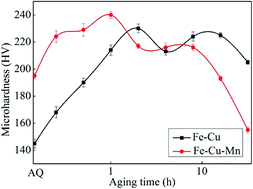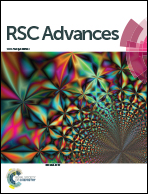Mn promotes the rate of nucleation and growth of precipitates by increasing Frenkel pairs in Fe–Cu based alloys
Abstract
Fe–1.0Cu (at%) and Fe–1.2Cu–2.2Mn alloys aged at 450 °C for 0.25 h, 1 h, 2 h, and 16 h after solution treatment at 900 °C for 2 h are investigated to reveal the role of the addition of Mn on the Cu precipitates in Fe–Cu based alloys. Density functional theory (DFT) total energy calculations on point defects and their influence on Cu precipitates are also performed to understand the nucleation and growth of Cu precipitates. Experiments show that addition of Mn can slightly increase the aging peak hardness by 10 HV; by using atom probe tomography (APT) and optical microscopy, we identify that the increase in hardness derives from both grain refinement and the increase of number density of precipitates. DFT calculations show that Mn increases the formation possibility of Frenkel pairs, i.e., atomic vacancy and self-interstitial atoms, and these two types of defects both serve as nucleation sites of Cu precipitates, resulting in the increase of the nucleation centers number density, which is consistent with our APT experiments on the very initial stage of aging. Moreover, calculated results show that Mn increases the density of atomic vacancies and promotes the evolution rate of Cu precipitates, which accounts for our APT experiments where precipitates in Fe–Cu–Mn grow more quickly than in Fe–Cu. Finally, we also discuss the relationship between Mn content in reactor pressure vessel steels and its irradiation damage effects.



 Please wait while we load your content...
Please wait while we load your content...